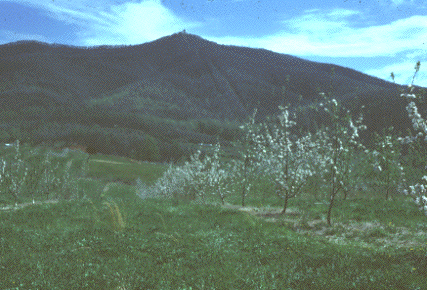
II. Hosts: The mirids mentioned (and many others) are all commonly found on apple and many may also be found on other deciduous fruits, bushes or trees. A few species feed on the fruit or plant tissues and others may cause injury by their ovipositional activity. Some species such as C. verbasci are predaceous on insects and also feed on and injure plants or fruit. The majority of species feed on one or several of the following; mites or mite eggs, insect eggs, small larvae or soft, easily subdued adults. Aphids of several species are hosts for many mirid species. Predation on other susceptible predatory arthropods is not uncommon.
III. Description: Each species is very distinct and only a general description of the family Miridae can be provided here. Illustrations are provided for Hyaliodes harti and H. vitripennis adults (Plate 137), H. harti nymph (Plate 138), Deraeocoris nebulosus adult (Plate 139) and nymph (Plate 140), D. nitenatus adult (Plate 141), and Ceratocapsus pumilus adult (Plate 142) and nymph (Plate 143). Adult Miridae collected on fruit crops are distinguished from the other bugs by four segmented antennae, the four segmented rostrum (beak), and the absence of ocelli (rudimentary eyes). The forewing has a hardened basal half and a membranous posterior portion. The abdomen consists of nine segments but only eight are visible.
Nymphal mirids are very tiny, delicate creatures which may not resemble the adults very much. However, with each successive molt the nymphs more closely resemble the adults of their species. Wings and genitals are lacking or rudimentary in the nymphal stages.
IV. Biology: Most mirids overwinter as eggs that are laid in soft plant tissue. The eggs are commonly completely imbedded, or have just the operculum (a round disk) exposed although sometimes the egg may be completely exposed on the leaf or plant surface. Nymphs of most species emerge in the spring at a time when there is sufficient new host plant growth or prey available on which to feed. Normally each nymph passes through five nymphal instars, each of five to seven days duration. Adults are voracious, continual feeders but males are short lived after mating. After oviposition the eggs require ten days to two weeks before hatching. Again the newly hatched nymphs pass through five instars and some overlap of the first generation adults (especially females), by the more numerous second generation does occur.
V. Injury: Terminal shoot growth of
lateral
branches as well as the central leader of the tree may be heavily fed
on
by C. verbasci nymphs or adults, commonly known as the mullein
bug, with resulting tissue death and shoot stunting or
distortion.
Feeding by C. verbasci on the fruit itself gives rise to small,
raised, reddish, pimple-like spots on the fruit surface. When numerous
injuries occur on the same fruit it becomes twisted or distorted. This
type of injury usually occurs when there are not sufficient numbers of
mite or aphid prey to sustain the predatory population. Some fruit
injury
is caused by mirid oviposition but this type of injury is not
significant.